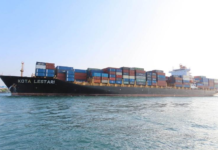
Carriers are paying their customers to move freight from North and South Europe, the Middle East and other backhaul trades, according to Arcon Containers.
Arcon Containers is a tech company looking to improve supply chain efficiency and is part of the Saksham Group based in Mumbai, the group president, Supal Shah, speaking at Container xChange’s Digital Container Summit in Hamburg yesterday, said that all the carriers are effectively paying to transport cargo.
“Containers can be booked from Hamburg to Shanghai for $80 per box, from India and the Middle East it’s $5 per container, but that includes the THC [terminal handling charge] which is around $250 a box, so they [the lines] pay [between $170 and $245] to evacuate their equipment to Asia,” explained Shah.
The movement of empties is a critical cost for shipping lines with the Digital Container Shipping Association’s Alexander Overtoom, claiming that some 60m empty container moves are made each year, at a cost of around US$20 billion.
“If companies can improve their communications with container depots that would increase the availability and visibility of where containers are, giving the carriers better operational efficiencies,” said Overtoom.
Global demand has dropped considerably this year with Drewry Shipping Consultant’s John Fossey, on the same platform as Shah explaining that, “The world fleet is growing faster than demand”.
According to Fossey, capacity will see a 5% increase this year, with negligible demand growth of 0.3% putting rates under continued pressure this year, which is expected to continue in the coming years.
Drewry’s forecasts show demand will recover to 2.6% and 2.9% in 2024 and 2025 respectively, but with 2022 seeing only a 0.5% growth in demand, and capacity increases of 4.5%, it leaves only 2021 as the year where demand will have outstripped capacity growth 7% compared to 4.7%, in the five years from 2021-2025.
However, Fossey also pointed out that the “effective capacity” would be difficult to predict because as the new IMO regulations such as the carbon intensity indicator (CII).
He explained that in the period between 2020 and 2022 when ships were forced to slow down due to congestion in ports and on the landside infrastructure in different trades, the effective capacity was reduced by 7%.
Drewry estimates that around 30% of the existing fleet will eventually need to slow steam as the CII regulation becomes increasingly more stringent as we approach 2030.
Even so, Fossey added that Drewry made a calculation of demand that revealed global growth in container demand would reach 935 million TEUs by 2025. Had the same calculation been made a few years ago the consultants would have forecast that growth would have passed the 1 billion TEUs mark by 2027.
Mary Ann Evans
Correspondent at Large





